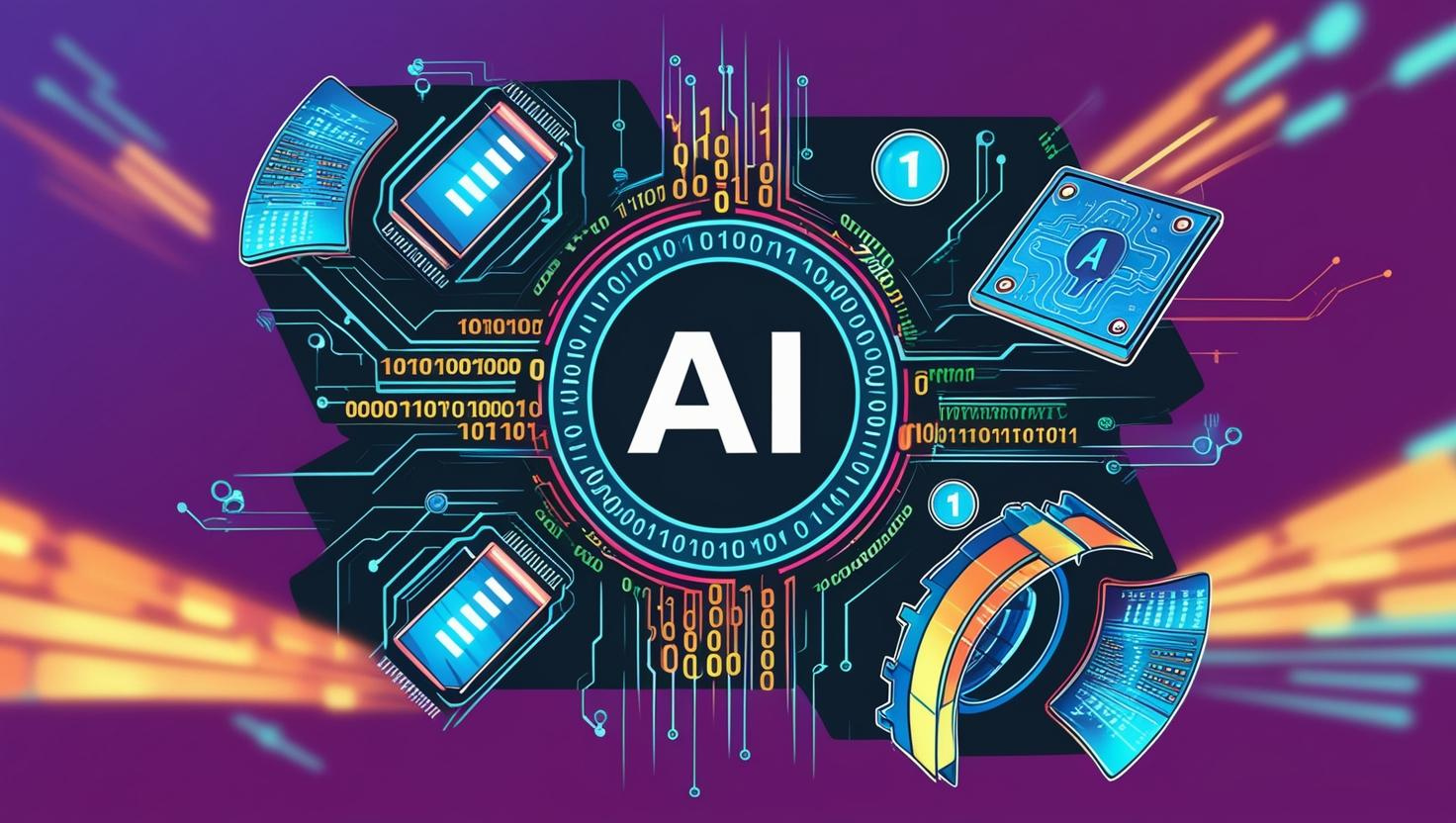AI’s development remains nascent, as does its meaningful application at most entities and in most people’s lives, but adoption is very much underway, and progress on new technologies, including multimodal AI, edge AI, causal AI, and agentic AI, promises to deepen AI’s impact in unprecedented ways.
Investment trends and human talent will be central to the course of that development, to increased applications of new technologies, and to the management of existing, potential, and yet-to-be-recognized risks and opportunities.
Our library of research and podcasts offers extensive analysis by AI and industry experts and will continue to build over 2025 with early identification and assessment of important trends and forward-looking analysis of events as they unfold.
History may yet record 2024 as the year that AI began to make the shift from promising technology to ubiquitous tool.
In the public sphere, large language models (LLMs) and, more broadly, generative AI increasingly transitioned from curiosity to a functional aid (at least for a significant minority of the developed world), taking a role in everything from mundane report writing to the creation of personalized bedtime stories for kids. Across many sectors, previously speculative investment in the technology increasingly offered regular and tangible benefits as organizations deployed AI-powered initiatives (see AI In Pharmaceuticals Promises Innovation, Speed, And Savings, Oct. 1, 2024, and AI In Real Estate: What To Watch As Adoption Accelerates, May 28, 2024).
There is no doubt that AI still has a long and uncertain road ahead. Yet we share a conviction with many other market participants that increased application and the increasing capabilities of AI will have profound, and accelerating, effects across all sectors of the economy, all organizations (both directly and often indirectly), on labor markets, on energy usage, and in society–for good and bad (see The Rise of AI-Powered Smart Cities, May 18, 2024; and Look Forward Journal Artificial Intelligence, Dec. 4, 2024).
That conviction demands our ongoing attention. Over the past year, we have explored and regularly published analysis on the fundamentals of AI technology and its development (see Language Modeling: The Fundamentals, Jan. 23, 2024). And we have looked at its deployment, its impact, and its potential–including due to the paradigm shift in computational power that will arrive when AI is combined with quantum computing (see Artificial Intelligence and Quantum Computing: The Fundamentals, Sept. 10, 2024).
Such analysis is necessarily a complex task. Partly, that is because the application of AI and the discovery of its boundaries remain uncertain, evolving, and will be dictated by investment trends and the development of human talent (see Investment And Talent Are The Keys To Unlocking AI’s Potential, July 9, 2024). But it also reflects the reality that AI is not a single, monolithic technology, but myriad different processes, developments, and projects. Each of those has a combination of strengths and limitations that dictate their potential and are, in turn, dictated by the particularities of their underlying technologies, applications, the environments in which they operate, and their governance requirements (see Podcast: Artificial Intelligence Insights, Episode 2: Governance Considerations for AI, June 13, 2024). Furthermore, developments in AI are often non-linear, meaning that they often don’t simply extend the uses of existing technologies. Rather, developments can lead to sudden breakthroughs and inspire the development of new technologies and applications targeting entirely new problems and multidisciplinary fields, such as synthetic biology (see Artificial Intelligence Powering Synthetic Biology: The Fundamentals, June 25, 2024). Furthermore, a combination of breakthroughs can lead to non-linear outcomes that could deliver exponential advancement in AI’s capabilities.
The indirect effects of AI
Our coverage of AI necessarily extends beyond the direct application of the technology to encompass the wider impact of its adoption. Indirect effects of the growth in AI are already being felt across a host of sectors–notably those with exposure to the surge in demand for data center capacity, including real estate companies, the power and utilities sector, and midstream gas suppliers (see Data Centers: Rapid Growth Creates Opportunities And Issues, Oct. 30, 2024).
AI’s increasing applications will also entangle the systems in which it operates, with the potential for effects to reach far beyond the immediate users. That possibility is perhaps most evident in the financial sector, where the adoption of AI exacerbates the risk of operational disruption leading to systemic instability that could have wide-ranging implications (see Your Three Minutes In AI: Financial Systems Will Face New Systemic Risks, Oct. 4, 2024).
Those risks could be mitigated through effective governance, regulation, and decentralization (see section on “edge AI,” below). Yet the pace of development in AI and its expanding use exposes such efforts to the challenges of containing not only existing and potential risks but also to uncovering unrecognized risks (a variation on the “Rumsfeld matrix” of known knowns, known unknowns, and unknown unknowns). Predicting risk is core to our efforts to understand the evolution of AI’s effects on organizational credit quality and will continue to drive our research (see Crypto and AI: Shaping The Future Of The Internet, Oct. 1, 2024).
What we will be watching in 2025
Over 80% of organizations forecast their AI workflows will increase in the next two years, while about two-thirds expect pressure to upgrade IT infrastructure (see Generative AI: From Hype To Value, Nov. 25, 2024). The breadth and nuance of AI’s development, its effects (and potential), are evident in the slate of subjects that we have tasked ourselves to explore over 2025. They include:
Multimodal AI, which facilitates more human-like applications of generative AI models by enabling the integration and processing of diverse inputs such as images, audio, text, and video. The technology has gained traction in 2024 after OpenAI included the functionality in its models, Meta released a multimodal version of its LLaMA model, and NVIDIA launched an open-source multimodal foundation model (NVLM 1.0). We expect this technology will gradually gain relevance in industrial applications, particularly for companies that are already integrating language models into their businesses.
Multimodal AI is notably being developed or is already in use in sectors including:
- Healthcare: where medical imaging can be combined with patient history and lab results to improve diagnosis and treatment, for example, by systems developed by Merative (formerly part of IBM Watson Health) and Bayer (see AI In Healthcare: A Path To Long-Term Immunity? June 25, 2024)
- Automotive: where inputs, including from cameras, GPS, and LiDAR, are being combined to improve autonomous driving, emergency response, and navigation systems at companies including Waymo and Li Auto.
- Finance: where multimodal AI is being applied to analyze customers’ phone queries to support contact center employees’ response and resolution activities.
- Retailing: where the combination of visual images, product reviews, product information, customer interaction data, and warehouse data is used to optimize marketing campaigns, inventory management, and minimize packaging and shipping costs. Amazon, for example, uses its “Just Walk Out” multimodal AI to enable checkout-less shopping at its physical stores.
Edge AI, which moves AI computation to end users’ machines. Though not a new concept, we expect that the increasing use of small language models (SLMs) by companies will support the scalability of edge AI. That shift offers numerous advantages, including, notably, a reduced risk of mass outages associated with failures at major infrastructure or technology providers–known as centralization risk. The combination of SLMs with crypto technologies should further mitigate centralization risk, paving the way for more secure and decentralized computing and data storage (see AI & DeFi: Can Crypto Innovations Offset Artificial Intelligence Concentration Risks, Dec. 4, 2025). And because SLMs at the edge require less computational power, they will also offer energy efficiency advantages compared to data and resource-hungry LLMs (see Can AI become net positive for net-zero? Nov. 14, 2024). However, meaningful application of scalable edge AI will have to overcome the sizable challenge of ensuring that nascent technologies make their way from the lab to the field and are deployed in sufficient numbers to be impactful.
Causal AI, which can reason and make choices like humans do, uses causal inference to fundamentally understand why processes and decisions are made. This goes beyond the pattern recognition and correlation that underpins much of the current ability of AI (particularly discriminative AI and generative AI). We expect that capability will become increasingly important with increased AI adoption and the corresponding demand for data (both real and synthetic), as a means to identify true causality from spurious correlations. It should also enable AI models to deliver more reliable query responses, make more informed decisions, and potentially aid in the discovery of underlying causes–which could prove a powerful tool across sectors including healthcare and finance. Causal AI is generally regarded as one of the missing links to create artificial general intelligence (which matches or outperforms human cognitive abilities across any task). By nature, casual inferencing reduces complexity in decision-making, meaning it requires less data and power to deliver typically better performance. Active use cases are still relatively limited and tend to center on manufacturing, life sciences, decision sciences, and the study of human cognition and behavior.
Agentic AI, which describes the development of increasingly autonomous “AI agents” that make decisions and execute tasks based on a set of provided instructions (see Podcast: Artificial Intelligence Insights, Episode 4: Agentic AI, Oct. 30, 2024). This advancement opens the door for AI to shift from meeting a problem by providing relevant data to formulating and enacting solutions. As Microsoft put it, when it launched its generalist agentic system Magentic-One: the difference is “between generative AI recommending dinner options… (and an) agentic assistant that can autonomously place your order and arrange delivery.” Agentic AI promises to reduce the complexity inherent in many systems, enabling better human decision-making and a focus on higher-value activities like creativity, leadership, and communication and clarification of decisions.
Cognitive AI, which refers to AI being able to mimic human cognitive functions such as reasoning, learning, and problem-solving–including by using cognitive computing structures known as neuro-symbolic architecture that simulate human patterns of learning, reasoning, and understanding. We expect cognitive AI will follow the widespread adoption of agentic AI to become the next step in the technology’s evolution. Recent multimodal virtual chatbots, such as ChatGPT-4o and its latest model o1 (designed to think more deeply before responding), have some features that qualify as cognitive AI (i.e., the use of multimodal AI to provide reasoned responses and understand complex queries, and showcasing of adaptive learning in human interactions). Yet the models are not fully autonomous, meaning they require human inputs to achieve goals (unlike agentic AI), and do not yet integrate sensory information (from Internet-of-Things (IoT) devices, for example), telematics, or other sources of augmented real-time data needed for decision-making.
Source: S&P GLOBAL – By Miriam Fernández, CFA, Sudeep Kesh, and Paul Whitfield
Legal Notice: The information in this article is intended for information purposes only. It is not intended for professional information purposes specific to a person or an institution. Every institution has different requirements because of its own circumstances even though they bear a resemblance to each other. Consequently, it is your interest to consult on an expert before taking a decision based on information stated in this article and putting into practice. Neither Karen Audit nor related person or institutions are not responsible for any damages or losses that might occur in consequence of the use of the information in this article by private or formal, real or legal person and institutions.






